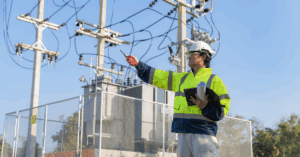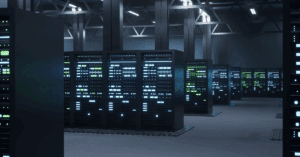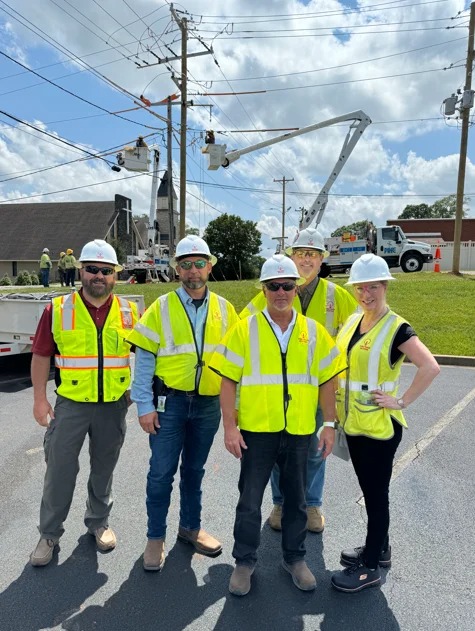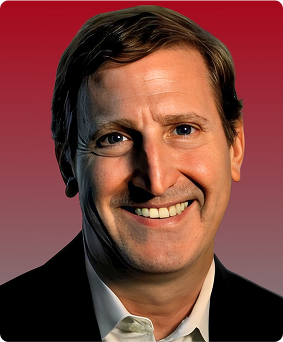The United States is in the midst of a massive energy transformation. What was once a centralized, fossil-fuel-dominated grid is evolving into a more dynamic, diversified system where renewable energy plays an increasingly dominant role. However, while the momentum is undeniable, the path to seamless integration of renewables remains complex and filled with technical, regulatory, and operational hurdles.
At Think Power Solutions, we work at the core of these challenges, providing oversight and expertise that help utilities build a more resilient and intelligent grid. With an industry-wide push for decarbonization, our focus is on practical execution—ensuring that infrastructure can support renewable energy adoption without compromising grid reliability or economic feasibility.
The Realities of Renewable Energy Integration
The numbers are compelling: according to the U.S. Energy Information Administration (EIA), renewables accounted for roughly 21% of the nation’s electricity generation in 2021 and are projected to exceed 40% by 2030. However, growth at this scale presents real-world obstacles:
- Transmission Capacity Gaps: Renewable energy projects—particularly large-scale wind and solar—are often located far from urban load centers. A report from the Lawrence Berkeley National Laboratory found that over 1,400 gigawatts of renewable energy and storage projects are currently stuck in interconnection queues due to insufficient transmission capacity.
- Grid Stability Concerns: Unlike conventional power plants that provide consistent output, renewables are intermittent. The challenge isn’t just about adding solar panels and wind farms; it’s about balancing the grid to ensure stable voltage and frequency.
- Aging Infrastructure: Much of the U.S. electric grid was built for centralized power generation. Modernizing aging transmission and distribution networks is essential for integrating decentralized energy resources effectively.
- Regulatory Hurdles and Permitting Delays: A typical high-voltage transmission project in the U.S. can take more than 7–10 years to permit and build. Without regulatory reform, infrastructure will continue to lag behind the pace of renewable energy deployment.
Strategic Solutions for Grid Modernization
To move beyond theoretical discussions and toward effective implementation, utilities and infrastructure managers must embrace targeted strategies that address these challenges head-on:
Expanding and Reinforcing Transmission Networks
Without sufficient transmission, renewable energy remains stranded. Utilities must prioritize investments in high-voltage direct current (HVDC) transmission, which offers higher efficiency over long distances. Additionally, integrating grid-enhancing technologies such as dynamic line rating and modular power flow controllers can optimize existing transmission capacity without waiting for new lines to be built.
Leveraging AI and Advanced Grid Analytics
AI-driven forecasting and predictive analytics are crucial for integrating renewables at scale. Machine learning algorithms can optimize energy dispatch, anticipate demand shifts, and help prevent grid congestion. We support utilities in implementing these tools to improve situational awareness and reduce operational risks.
Scaling Up Energy Storage Infrastructure
Storage is the bridge between renewable energy variability and grid stability. While lithium-ion batteries dominate today’s market, long-duration storage solutions—such as flow batteries and compressed air energy storage—are critical for ensuring a round-the-clock renewable energy supply. The National Renewable Energy Laboratory (NREL) estimates that U.S. energy storage capacity must expand from 7.5 GW in 2022 to more than 400 GW by 2050 to support renewable integration.
Inspection and Risk Management for Renewable Projects
Quality assurance and compliance oversight play a pivotal role in ensuring infrastructure resilience. At Think Power Solutions, we work with utilities to conduct rigorous inspections, enforce QA/QC protocols, and ensure that renewable integration projects meet regulatory and operational standards.
Grid Resilience and Extreme Weather Preparedness
The increasing frequency of extreme weather events—wildfires, hurricanes, and winter storms—demands a shift in how utilities approach resilience planning. Hardening infrastructure, deploying microgrids, and enhancing cybersecurity measures are critical steps in ensuring that the grid can withstand both natural and human-made disruptions.
The Way Forward
Transitioning to a renewable-powered grid isn’t just about adding more clean energy; it’s about designing an infrastructure that is adaptable, reliable, and capable of meeting the needs of an evolving energy landscape. This requires more than just investment—it requires strategic execution and technical expertise.
At Think Power Solutions, we are not just observers of this transition; we are active participants, helping utilities bridge the gap between vision and reality. Our expertise in transmission oversight, AI-driven grid analytics, and infrastructure inspections ensures that renewable energy projects are not only deployed efficiently but also built to last.
The future of energy is being written today. The question is: are we prepared to build the infrastructure that can support it?











